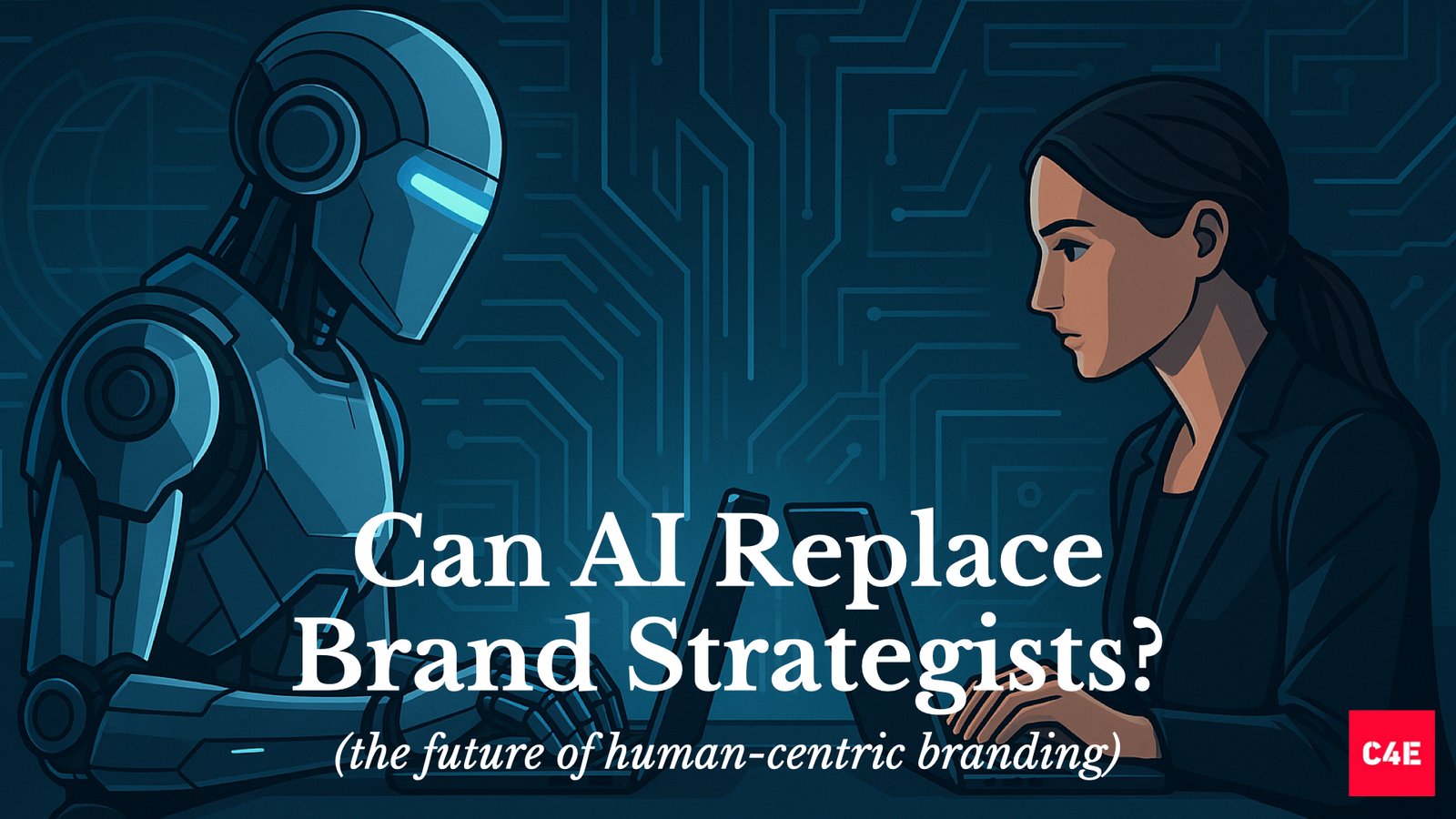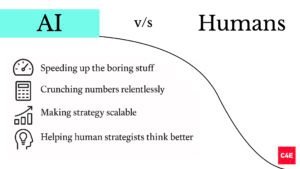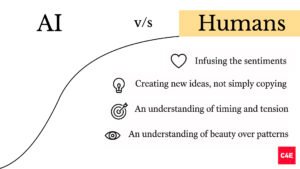
Can AI Replace Brand Strategists? The Future of Branding
AI can build a brand in minutes. A logo in five seconds. A brand voice in less than that.
But when everyone has access to the same tools, speed stops being an advantage. It just becomes noise. Louder, faster, blander noise.
We’re in a strange place right now where AI is smart enough to generate strategy decks but not smart enough to know if any of it actually matters.
Because brand strategy doesn’t stop at what you say, it’s also about why people believe you. And no matter how good the algorithm gets, belief is still a human thing.
So, no, this isn’t an anti-AI rant. It’s not a love letter to the “good old days” either.
This article explores the scenario of what happens when AI enters a room full of creative strategists.
Because the important question isn’t: Can AI replace brand strategists?
It’s: What kind of brand do you end up with when it does?
What AI Can Do (and Does Well)

There’s no denying today that AI is good.
Really good.
It can analyze thousands of data points before you’ve even opened your second tab. It can map audience sentiment. Test fifty tagline variations. Redesign your website’s hero section before lunch.
You can use that to your advantage.
Here’s what AI excels at in brand strategy:
1. Speeding Up the Boring Stuff
Hand over those repetitive tasks.
A survey revealed that 43% of marketers employ AI to automate routine processes, including rewriting email copy and generating SEO snippets. You don’t need a strategist to decide which blog to repurpose. AI’s got it.
2. Crunching Numbers (Without the Bias of a Bad Mood)
AI doesn’t get tired. Or subjective. Or distracted by Slack pings. It just sifts through data. Fast.
Whether sentiment analysis, A/B testing, or performance benchmarking, you can trust AI brand perception analysis tools.
3. Making Strategy Scalable
AI tools can replicate templates across channels and regions without breaking a sweat.
Need 20 product variants with slightly tweaked messaging? Done.
Need five audience personas by noon? Easy.
AI brand strategy automation is great at mass production. Use it accordingly.
4. Helping Human Strategists Think Better
The best strategists aren’t afraid of AI.
They use it to test assumptions, pressure-check ideas, and catch blind spots.
It’s not by any means a replacement, but rather a high-speed research assistant with no ego. The rise of AI brand strategy automation has made one thing clear: faster branding doesn’t always mean better branding.
So yes, AI is changing the game. But only if you know what game it’s playing.
What AI Still Can’t Do

AI can analyze trends. But it can’t start one.
And that’s the thing. You can train an algorithm on what worked before.
But strategy merely doesn’t stop at what worked before. It also requires finding what could work next.
Here’s where AI still fumbles:
1. It Doesn’t Feel. It Forecasts.
A rebrand can be a cultural shift.
When Airbnb updated its logo, people felt the new icon, which was a move from couchsurfing to belonging.
That’s emotional intelligence. And 0% of machines have it.
You can feed AI all the brand books in the world, and it still won’t know how your audience will feel after a tragedy or what not to post during a crisis.
Indeed, 31% of marketers report concerns around AI accuracy and quality.
2. It Copies Beautifully. It Creates Poorly.
AI has clear creative strategy automation limitations: it is trained on the past. It can remix. Not invent.
That’s why so much AI-led branding feels… safe. Predictable. Beige.
50% of marketers already use AI to create content, which means we’re approaching a saturation point where sameness becomes the default unless a human intervenes to break the pattern.
3. It Doesn’t Understand Timing. Or Tension.
Great strategy goes beyond what you say.
It’s when you say it.
How you say it.
And even what you leave unsaid.
A strategist knows when to pause, when to provoke, and when to shut up; essentially, emotional intelligence in branding AI cannot replicate.
While AI merely outputs.
4. It Doesn’t Do Beauty, Only Patterns.
Humans respond to beauty, imperfection, friction. To visuals that feel intuitive, not just well-structured.
This domain of neuroaesthetics in human-led brand design is where emotion meets strategy, something human strategists are experts at.
We’re still miles away from AI understanding why a handmade scribble might beat a pixel-perfect icon.
Human vs AI Brand Development: What’s the Future?
Let’s get one thing out of the way: This isn’t a battle, nor should it be. Instead, it’s a division of labor.
AI isn’t here to replace brand strategists but to force them to get better at what only humans can do. When it comes to human vs AI brand development, the critical question is understanding who brings what to the table.
Because when you strip brand strategy down to data points, you get output. When you build it on insight, context, and contradiction, you get something that actually speaks.
So what does the future look like?
The Hybrid Model Wins

In 2025, 56% of marketers say their companies are actively implementing AI. That number’s only going up.
However, the teams seeing real results are not using AI to think for them. They’re using it to move faster once the thinking’s done.
Human-led ideas. AI-powered execution.
That’s the combo.
Your Competitive Edge Is the Taste
AI will give you a hundred directions, but only a human knows which one feels right.
Great strategists don’t just know what a brand should say. They also know what it shouldn’t.
That restraint, that clarity, isn’t programmable.
The Strategist’s Job is Changing (Not Disappearing)
You’re not just building positioning statements anymore but interpreting signals, training prompts, guiding machines, and being the human in the loop who actually understands why something feels off.
In short, you’re becoming the creative director of the algorithm.
And the brands that win won’t be the fastest or cheapest, but the ones that know what not to automate.
Replace the Repetition. Keep the Soul.
AI can build a brand that looks right, but only humans can build one that feels right.
That’s the difference. And that’s why the strategist’s seat isn’t going anywhere.
Yes, AI is faster. Smarter in some ways. Infinitely scalable, but brand strategy was never about efficiency. It’s about resonance. And resonance still needs a pulse.
The future isn’t human or AI but knowing what to hand over and what to hold close, because if your brand sounds sharp, looks sleek, but no one connects with it, congrats, you’ve built something forgettable at scale.
So, can AI replace brand strategists? Sure. If all you want is content.
But if you want meaning? Memory? Movement? You still need a human.

